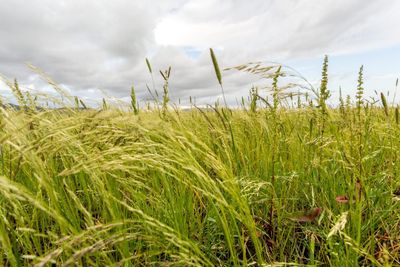What is Teff Grass?
Teff grass (Eragrostis tef) is an ancient staple grain crop thought to have originated in Ethiopia. It was domesticated in Ethiopia in 4,000-1,000 BC. In Ethiopia, this grass is ground into flour, fermented, and made into enjera, a sourdough type of flatbread. Teff is also eaten as a hot cereal and in the brewing of alcoholic drinks. It is used for livestock forage and the straw is also used in the construction of buildings when combined with mud or plaster. In the United States, this warm-season grass has become valuable summer annual forage for livestock and commercial hay producers that need a rapidly growing, high-yielding crop. Farmers are also planting teff grass as cover crops. Teff grass cover crops are useful for suppressing weeds and they produce an excellent plant structure that doesn’t leave the soil lumpy for successive crops. Previously, buckwheat and sudangrass were the most common cover crops, but teff grass has advantages over those choices. For one thing, buckwheat has to be controlled when it matures and sudangrass requires mowing. Although teff grass needs occasional mowing, it requires less maintenance and doesn’t produce seed, so there is no unwanted offspring. Also, teff is more tolerant of dry conditions than either buckwheat or sudangrass.
How to Grow Teff Grass
Teff thrives in many environments and soil types. Plant teff when the soil has warmed up to at least 65 F. (18 C.) followed by temperatures of at least 80 F. (27 C.). Teff germinates on or very near the surface of the soil, so a firm seedbed is important when sowing teff. Sow seeds no deeper than ¼ inch (6 mm.). Broadcast the tiny seeds from late May-July. Keep the seedbed moist. After only about three weeks, seedlings are fairly drought-tolerant. Mow teff to a height of 3-4 inches tall (7.5-10 cm.) every 7-8 weeks.
